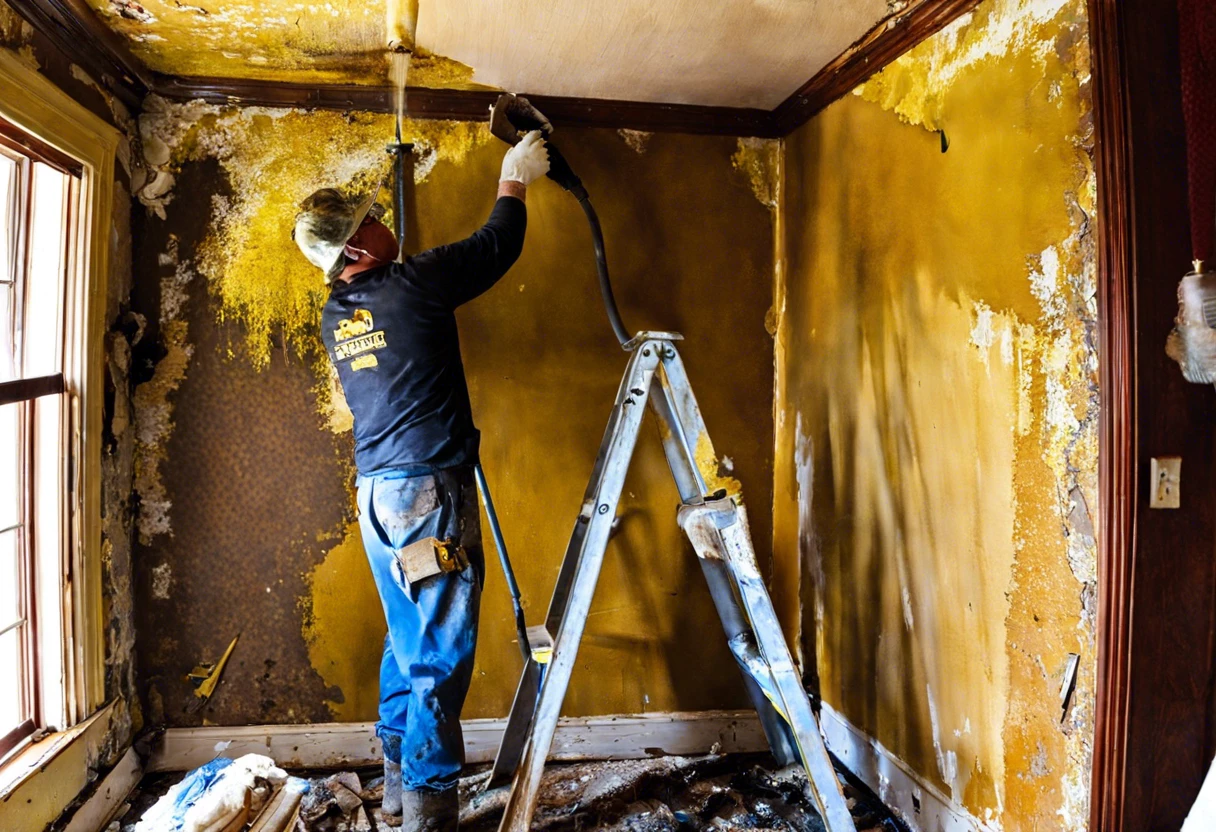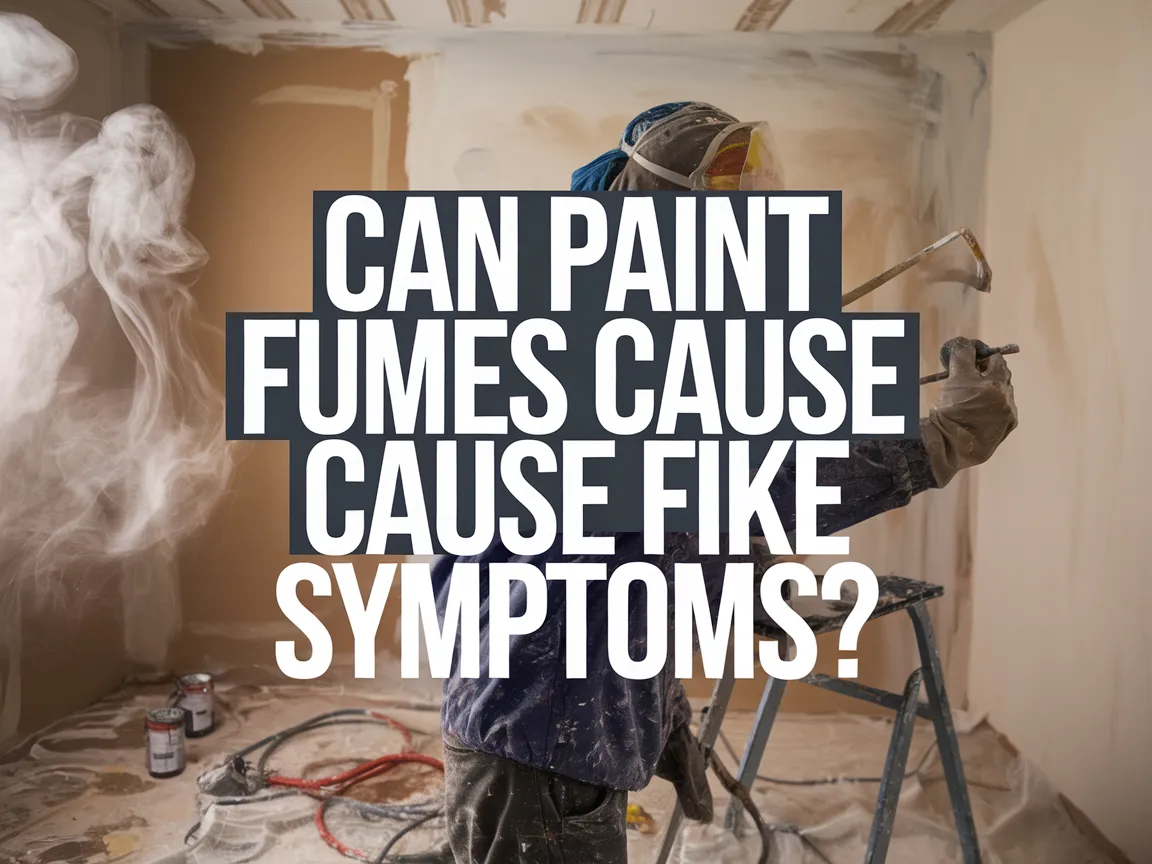Can A Homeowner Remove Lead Paint?
Published on: April 21, 2025 | Last Updated: January 7, 2025
Written By: Sarah McClintock
Lead paint is a type of paint that’s super dangerous. It can make people, especially kids, very sick if they breathe it or eat tiny bits of it.
So, can a homeowner remove lead paint? It’s really important to know how to handle lead paint safely. I’ve seen how messy and harmful it can be, so you definitely don’t want to take any chances!
In this article, we’ll explore what lead paint is, consider important safety facts before starting, look at step-by-step removal techniques, reveal issues homeowners face, and share fun DIY ideas afterward. Whether you wonder how to know if paint has lead or if you can safely paint over lead paint, we’ve got you covered.
Contents
- 1 Can a Homeowner Remove Lead Paint?
- 2 What is Lead Paint?
- 3 What to Consider Before You Start Removing Lead Paint
- 4 Is It Legal for Homeowners to Remove Lead Paint?
- 5 Lead Paint Testing for DIY Enthusiasts
- 6 Understanding Encapsulation as a Safe Alternative
- 7 Detailed Steps for Safely Removing Lead Paint
- 8 Different Types Of Lead Paint Removal Techniques
- 9 Factors Affecting Lead Paint Removal Success
- 10 Common Issues Homeowners Encounter When Removing Lead Paint
- 11 What to Do with Lead Paint Waste?
- 12 Cost Breakdown for Lead Paint Removal
- 13 Finishing Touches After Lead Paint Removal
- 14 Creative DIY Project Ideas After Removing Lead Paint
- 15 Frequently Asked Questions About Removing Lead Paint
- 16 Conclusion
- 17 Additional Resources
Can a Homeowner Remove Lead Paint?
Yes, a homeowner can remove lead paint, but it’s risky. Proper precautions, like protective gear, are essential. You may also need to follow local laws on lead paint removal. It’s often safer to hire a pro. If you’re concerned about potential paint damage during the removal process, paint damage risks require careful assessment.
The Finishing Touch
A freshly painted wall is a blank canvas. The best way to bring your room to life is with a single piece of statement art that ties everything together.
Browse Wall Art at Big Wall DecorWhat is Lead Paint?
Lead paint is a coating that contains lead, a toxic heavy metal that poses serious health risks. It was commonly used in homes before being banned in 1978 in the U.S. Studies show over 24 million homes may still contain it. If you’re working with older paint surfaces, you’ll want to know the proper techniques for handling lead paint health risks safely.
Removing lead paint requires special care and knowledge. A couple of years ago, I addressed this issue in my old house, sparking my interest in safe techniques and best practices.
That experience taught me that while some believe you can simply paint over lead paint, you can’t unless it’s sealed properly. The thought of selling a house with lead paint raises concerns; I learned that clear remediation steps are vital for safety, especially for families and pets, as dogs can also get lead poisoning! When preparing surfaces for painting, knowing the right techniques becomes crucial for preventing potential hazards and mastering paint application methods.
What to Consider Before You Start Removing Lead Paint
What do you need to prepare for?
- Lead Paint Test Kit: Use a kit like the 3M LeadCheck to test for lead paint. You need this to determine if lead is present before starting the process.
- Personal Protective Equipment (PPE): Get N95 respirators and disposable coveralls, such as those by DuPont. They’re essential for protecting you from inhaling toxic dust.
- Plastic Sheeting: Buy heavy-duty plastic, like Visqueen plastic sheeting (3 M X 30.5 M / 10 Ft X 100 Ft), to contain dust and chips during removal.
- Wet Wipes: Use disposable wet wipes, such as Lysol wipes, for efficient clean-up of lead dust.
- Heavy-Duty Trash Bags: Invest in contractor-grade trash bags for safe disposal of lead waste according to local regulations.
That covers key factors to evaluate before lead paint removal. Let’s now take a look at the legality of homeowner removal.
Also See: How to Paint a Motorbike Frame? Quick Guide

The Finishing Touch
A freshly painted wall is a blank canvas. The best way to bring your room to life is with a single piece of statement art that ties everything together.
Browse Wall Art at Big Wall DecorIs It Legal for Homeowners to Remove Lead Paint?
Before you dive in, it’s essential to understand the legal landscape around lead paint removal.
-
Local Regulations
Different areas have different rules. Some places require homeowners to hire certified professionals, especially if the house is more than 5,000 ft² (465 m²).
-
Federal Law
The EPA’s Lead Renovation, Repair, and Painting Rule (RRP) provides guidelines for work done in homes built before 1978. Homeowners must follow this even for DIY projects.
You should now have a good understanding of the legality of lead paint removal for homeowners. In the next part, we’ll discuss testing lead paint for DIY projects.
Lead Paint Testing for DIY Enthusiasts
Testing for lead is a crucial step before anything else. Here’s how you can ensure safety.
| Testing Method | Time Required | Cost (USD) | Accuracy |
|---|---|---|---|
| DIY Lead Test Kit | 10 Minutes | $10 – $40 | Moderate |
| Professional Testing | 1-3 Days | $200 – $500 | High |
Investing in a professional can save headaches later, especially if you’re unsure about your testing skills.
You should now have a good understanding of lead paint testing and its importance. In the next part, we’ll discuss encapsulation as a safe alternative.
Understanding Encapsulation as a Safe Alternative
Encapsulation might sound technical, but it’s an effective way to manage lead paint risks.
-
What is Encapsulation?
This method involves sealing lead paint under a special coating. It’s a quick fix, but requires professional-grade products.
-
Benefits of Encapsulation
It’s less messy and can be a cheaper solution, often costing between $50 and $80 (USD) per gallon (3.78 L) of encapsulant.
But remember, it’s not a permanent solution. You’ll still need to monitor the condition of painted surfaces regularly!
That covers the concept of encapsulation as a safe approach. Let’s now take a look at the steps for safely removing lead paint.

Detailed Steps for Safely Removing Lead Paint
Here are the steps to remove lead paint from your home safely and effectively. Don’t skip any to ensure your safety and that of your family.
-
Prepare Your Workspace
Start by sealing off the area you’ll be working in. Use plastic sheets to cover vents, windows, and floors to prevent lead dust from spreading. This is crucial because maintaining a clean environment is better than cleaning up a big mess later.
Turn off heating and cooling systems to minimize air circulation. It’s best to set up your workspace away from high-traffic areas to keep everyone safe during this process.
-
Test for Lead Presence
Use a lead test kit to check paint samples throughout your home. Place sample leads in a designated area and wait according to the kit’s instructions, usually around 10 minutes.
If you find 1 mg/cm³ of lead, you’re dealing with hazardous lead paint, so proceed cautiously.
-
Select the Right Removal Method
I’d recommend using a chemical stripper instead of sanding. It’s safer and more efficient since mechanical sanding can crumble paint, releasing lead dust into the air.
Also, consider wet removal methods, like paint scrapers and damp rags. They minimize dust and help avoid exposure to lead paint particles.
-
Properly Dispose Of Lead Paint Waste
After removing lead paint, package the debris in tightly sealed plastic bags. According to EPA regulations, discard it following local hazardous waste guidelines.
Avoid tossing it in the regular trash—you could face fines or health risks. It’s always wise to double-check local rules for hazardous material disposal.
Different Types Of Lead Paint Removal Techniques
Let’s look at the various techniques for lead paint removal: wet scraping, chemical stripping, encapsulation, and heat gun methods.
-
Wet Scraping
Wet scraping uses water to loosen lead paint, reducing dust. It’s less disruptive and safer for homeowners by minimizing airborne particles.
-
Chemical Stripping
Chemical strippers dissolve paint layers without scrubbing. Homeowners must wear gloves and masks, as some chemicals can be harmful if inhaled.
-
Encapsulation
Encapsulation seals lead paint to prevent exposure. This method is simpler—homeowners only need to cover the paint securely.
-
Heat Gun Method
Heat guns effectively remove layers of lead paint by softening it. This method can release fumes, so proper ventilation is important while using it.
I’ve found that wet scraping feels the safest for DIY projects. It allows me to control the process while minimizing health risks from lead dust.
Factors Affecting Lead Paint Removal Success
What factors impact the safe and effective removal of lead paint?
-
Age of the home: Homes built before 1978 likely contain lead-based paint, requiring special handling.
-
Health precautions: If you or your pets have health issues, professional help minimizes the risk of lead exposure.
-
Local regulations: Check local laws; some areas require licensed professionals to remove lead paint.
-
Removal methods: The technique you use—stripping, sealing, or painting—affects safety and effectiveness.
The Finishing Touch
A freshly painted wall is a blank canvas. The best way to bring your room to life is with a single piece of statement art that ties everything together.
Browse Wall Art at Big Wall Decor
Common Issues Homeowners Encounter When Removing Lead Paint
My friend faced a big challenge when he decided to remove lead paint from his 1920s home. He learned the hard way that masking hazards won’t protect you from lead exposure—proper PPE (Personal Protective Equipment) is essential! When working with older paints, you might need to adjust paint consistency carefully.
To address this, use a HEPA (High-efficiency Particulate Air) filter, keep dust damp, and hire certified professionals for safe removal methods. It costs around $8–$10 (USD) per square foot for compliant cleanup.
What to Do with Lead Paint Waste?
You can’t just toss lead paint waste in the regular trash. Here’s how to handle it responsibly.
- Identify Waste Type: Lead paint debris is considered hazardous waste. It includes scraped-off paint chips, dust, and cleaning materials.
- Local Disposal Sites: Many towns have specific disposal sites for hazardous waste. Check your community’s guidelines or visit the EPA’s website for more information.
- Labeling: Clearly label your bags as “Lead Waste” to inform everyone handling it, including waste management workers.
Cost Breakdown for Lead Paint Removal
Understanding the costs involved can help you budget your lead paint removal project. Here’s a quick breakdown.
| Service Type | Average Cost (USD) | Notes |
|---|---|---|
| DIY Testing Kit | $10 – $40 | Quick results, moderate accuracy |
| Professional Lead Testing | $200 – $500 | Highly accurate, time-consuming |
| Lead Paint Removal Cost (per sq. ft.) | $8 – $15 | Depends on job size and local rates |
| Encapsulation (per gallon) | $50 – $80 | For sealing lead paint safely |
Remember, investing in professional help often saves you from future headaches and keeps your home safe.
Finishing Touches After Lead Paint Removal
After addressing the lead paint issue, ensure proper cleanup. Use a HEPA vacuum with a filtration efficiency of 99.97% to capture microscopic lead dust particles.
Inspect surfaces for residue with lead detection kits, such as 3M LeadCheck swabs, which detect lead down to 10 parts per million (Ppm). Check intact coatings for durability.
Here’s a pro tip based on my past projects: For long-term safety, seal any abrasions with a quality lead paint encapsulant, like Zinsser’s Roly-Blok, applied at a thickness of 2 mils (0.002 Inches).
Creative DIY Project Ideas After Removing Lead Paint
If you’ve just removed lead paint, grab that fresh canvas! Why not transform old chairs into fabulous planters or create a quirky wall art installation using reclaimed wood?
I love to grab some colorful pots and paint up those chairs with non-toxic paint. You’ll need about $30-$50 worth of supplies and a weekend – that’s roughly 6-10 hours of fun work!
Alternatives? You could also hire a pro for lead paint assessment and removal. Trust me, a certified lead removal service saves you loads of time and ensures your home stays safe!
Also See: How Can You Test for Lead Paint? Find Safe Methods
Frequently Asked Questions About Removing Lead Paint
What Safety Equipment Do I Need When Removing Lead Paint?
Yes, you need specific safety equipment when removing lead paint. This equipment includes a respirator with a HEPA filter, lead-safe disposable coveralls, gloves, and eye protection. Workers are 30 times more at risk than the general population when dealing with lead, so proper gear is vital for health and safety.
How Can I Tell if My House Has Lead Paint?
Yes, you can tell if your house has lead paint by testing it. Homes built before 1978 often contain lead paint, but you can use a lead test kit for confirmation. These kits, costing between $10 and $40, allow you to detect lead levels quickly and ensure safety for your family. Interestingly, the historical practice of painting structures like barns has its own fascinating color origins rooted in traditional agricultural techniques.
What Are the Health Risks Of Lead Exposure?
Yes, there are serious health risks associated with lead exposure. Long-term exposure can cause neurological issues, developmental delays in children, and increased blood pressure in adults. Studies show that even low levels of lead can be harmful, making awareness crucial for everyone’s safety. If you’re curious about working with alternative materials that minimize potential health risks, exploring air-dry clay techniques might offer a safer creative option.
Should I Hire a Professional for Lead Paint Removal?
Yes, you should consider hiring a professional for lead paint removal. Professionals are trained to safely remove lead and adhere to regulations that protect your home and family. The cost of hiring experts typically ranges from $8 to $15 per square foot (0.09 To 0.14 M²) significantly reduces health risks compared to DIY methods. If you’re curious about exploring digital painting techniques, you might want to explore animation possibilities in paint.
Can Dogs Get Lead Poisoning From Paint?
Yes, dogs can get lead poisoning from paint, particularly if they chew or ingest lead-contaminated paint chips. Lead poisoning can lead to serious health issues in dogs, so it’s essential to check for lead paint if your home dates back to before 1978 and address any hazards quickly.
Can You Just Paint Over Lead-based Paint?
No, you shouldn’t just paint over lead-based paint without proper treatment. Encapsulation, using special products, is necessary to ensure safety and compliance. This will seal the lead underneath and prevent hazards, but if the lead paint’s condition worsens, it must still be fully removed to avoid health risks. When working with acrylic paints during such projects, you might need to adjust paint consistency carefully.
Conclusion
That brings us to the end of our discussion on lead paint safety.
We covered what lead paint is, factors to consider before tackling removal, detailed steps for safe removal, various techniques, and common issues to expect, plus finishing touches and creative DIY ideas. Happy to say, homeowners can remove lead paint, but they should follow safety steps, consider the right techniques, and know what common challenges to expect for a successful process.
We hope you found valuable insights in this guide and encourage you to explore more resources at Paint Answers.
Additional Resources
- Betti, C., & Sale, T. (2012). Drawing: A Contemporary Approach (6th ed.). Belmont, CA: Cengage Learning.
- 6 Common Homeowner Questions About EPA’s New Lead Paint Safety Rule
- What Home Owners Need to Know About Removing Lead- …









